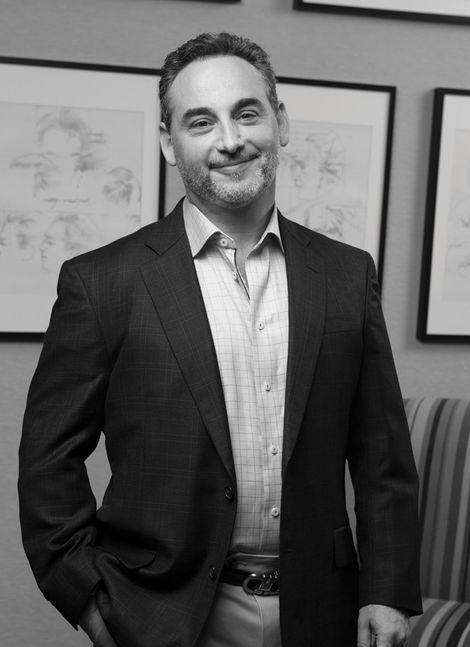5 Expert-Recommended Hair Loss Treatments
There is so much emotion tied into our hair— whether we wear it long, short, natural textured or color-treated, we don’t call it our “crowning glory” for nothing. Despite the importance we place on our hair, the fact remains that nearly 30 million women live with hair loss or thinning hair. For many, hair loss is directly linked to genetics, but other factors like diet, illness, stress and aging can exacerbate the problem. Rather than letting this issue affect our self-esteem and how we see ourselves, there is now a myriad of options for getting back to our healthy hair roots.

You May Also Like: FDA-Approved Skin Care Drug Found to Reverse Severe Hair Loss
Ways to Get Thicker Hair
Hair growth can significantly decrease due to many factors, which results in thinning and hair loss. When hair follicles temporarily stop growing and begin to shed, it’s usually because they’ve been exposed to certain stressors. As hair gets thinner over time, it’s due to the follicles producing finer hairs over consecutive cycles. The diameter of the hair fiber then becomes thinner and the growth cycle becomes shorter. Here are four ways top hair-restoration experts are helping patients combat the problem.
The At-Home Device
At-home light therapy caps provide low-level laser therapy (LLLT) by using light at specific wavelengths to promote blood circulation in the scalp.
Who It’s For: Those seeking a gradual solution
Who It’s Not For: “Pregnant women and patients with diabetes, epilepsy, thyroid gland disorders or cancer,” explains Beverly Hills, CA hair transplant surgeon Dr. Craig L. Ziering.
What to Expect: LLLT brings fresh oxygen and nutrients to the scalp to nourish it at the follicular level, promoting new hair growth and thicker hair texture. Handheld tools can be used at home, but it is always advisable to undergo light therapy under the supervision of a hair-restoration expert. “LLLT is designed to improve follicle function and reverse the effects of hair loss by helping the follicles produce thicker, longer, healthier and improved pigmented hair,” says Dr. Ziering.
The All-Natural Route
The popularity of using platelet-rich plasma (PRP) to treat hair loss is largely due to the protocol’s minimally invasive technique of using the patient’s own growth factors and body nutrients.
Who It’s For: “Anyone suffering from androgenetic alopecia for less than three to five years,” advises Englewood Cliffs, NJ dermatologist Jeffrey Rapaport, MD.
Who It’s Not For: “Patients who have any underlying medical causes of hair loss such as an autoimmune disease, iron deficiency, anemia or a hormonal abnormality,” says Beverly Hills, CA dermatologist Ava Shamban, MD. “Also, people who have a scalp disease such as a scarring alopecia.”
What to Expect: PRP entails drawing 11 or 22 milliliters of blood, spinning down the plasma in a special centrifuge, extracting the PRP, and then injecting it into the subdermal areas of the scalp. “I combine this treatment with an oral supplement, Nutrafol, and a proprietary topical and low-energy laser treatment,” says Dr. Shamban. After the treatment, Dr. Rapaport recommends patients “go home and take a hot shower, shampoo and massage the scalp, and avoid using chemicals, color or hair fibers for 24–48 hours afterward.” While some published results appear encouraging, there can be variability in technique and outcome. According to Dr. Ziering, “I combine PRP with Acell, at my practice, and when done every 12 to 18 months, PRP slows down shedding, stabilizes hair loss and promotes overall hair quality and health.”
The RX or OTC Method
Hair-loss medications work to block the hormones that lead to hair miniaturization.
Who They’re For: A doctor will advise whether prescription birth control pills, spironolactone or, for post-menopausal women, finasteride (aka Propecia), is best. Topical minoxidil (found in Rogaine) up to 5 percent has been approved for OTC use for women.
Who They’re Not For: Finasteride isn’t recommended for women who haven’t gone through menopause; topical minoxidil can cause scalp irritation.
What to Expect: During the first few weeks of treatment, additional shedding may occur as hair switches from a dormant to active phase. Maximum results can be seen by 12 months. “I always recommend patients stay on Rogaine and Propecia, even after a hair transplant, because it will only further nourish the other native hairs that may have a proclivity to thin and miniaturize,” says Beverly Hills, CA facial plastic surgeon Natalie Attenello, MD.
The Modern-Day Transplant
Hair-restoration surgery is the only permanent option to treat hair loss. Whereas other treatments work to slow hair loss, surgery helps place hair where there isn’t any. “Surgery should be the last resort if all attempts to slow down or stop the progression of hair loss have been exhausted,” says Dr. Ziering. “It’s also important to note that nonsurgical approaches can be combined with surgical protocols for a more integrated approach to treating hair loss.”






